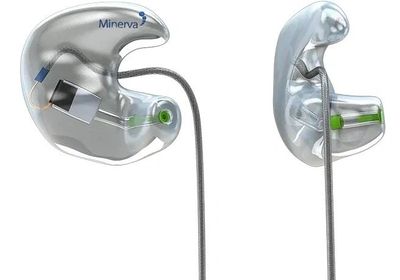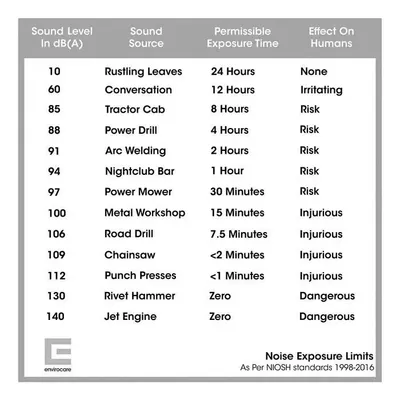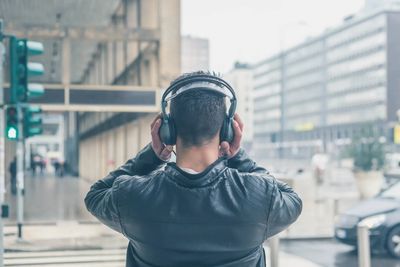MUSICIANS' AND OCCUPATIONAL HEARING PROTECTION CONSULTATION
Hearing Therapy is a service which can provide information, counselling and practical assistance for people experiencing issues with hearing loss, central processing disorders (or Hidden Hearing Loss), tinnitus and hyperacusis.
Who we help
How does it work?
The greater the number of decibels the ear plugs can reduce, the better overall protection they offer. At Clearly Hearing, we have an extensive range of generic earplugs available, but our custom made ear plugs are the best for musicians.
These custom fitted earplugs provide a higher level of protection as well as better fidelity of sound compared to generic earplugs as they are shaped according to your ears and go through a rigorous quality check. They tend to be more expensive but should be looked upon as an investment to prevent permanent hearing damage.
Several companies manufacture specialist hearing protectors and in-ear monitors for musicians, and at Clearly Hearing, we can help you find your best match. We have a wide range of technical ear protection products available, which we can adjust to address your unique hearing needs.
For musicians, it is essential to select an earplug that comes with an in-built filter set to provide a flat frequency response and some reduction in intensity, or a combination of hearing protection and digital hearing aid technology. Because of the way the new sounds will be perceived, it is essential to practise wearing your new earplugs. Remember, a custom made ear plug will always sound better than off-the shelf earplugs, but like anything, it will take time to get used to it.
At Clearly Hearing, our custom fitted earplugs will effectively reduce the overall level of sound whilst maintaining an even balance across frequencies. This means that you can still hear everything clearly, although the overall sound level will be reduced.
Our custom made sleep ear plugs are perfect for reducing night-time noise, which aids in a good night’s sleep. It’s made from ultra-soft silicone for a comfortable fit throughout the night. This type of silicone is a very flexible material and is produced in a carved shape (Concave) for comfort, no matter what position you sleep in. They come with a small removal handle, and are available in a range of colour options.

Musicians' Hearing Appointments Price List
Assessment
Premium Assessment
All parts of a Standard & Advanced assessment
Otoscopy, Audiometry, Audiogram Report, ULLs, MCLs, SIN, Wax Removal
Tinnitus Assessment
These tests are designed to diagnose tinnitus type, pinpoint tinnitus tone and identify any anything that may be exacerbating the impact of your tinnitus.
Hyperacusis Assessment
These tools will be used for the identification and measurement of hyperacusis, diplosis, misophonia and phonophobia
Hearing Protection Plan
Detailed advice on how to manage your hearing risks
£175
Advanced Assessment
All features of a Standard assessment
Otoscopy, Audiometry, Audiogram Report
Uncomfortable Loudness Levels
To identify the minimum level of sound that is judged to be uncomfortably loud
Most Comfortable Loudness
To identify the level of sound that is judged to be comfortably loud
Speech In Noise Test
Evaluate how well you understand speech with background noise.
Wax Removal
Microsuction
£160
Standard Assessment
Otoscopy
A visual and physical examination of your outer and middle ear
Audiometry
Hearing sensitivity test
Audiogram Report
A detailed explanation of your hearing sensitivity test results
£57
Hearing Protection
Tailored Hearing Protection plan
A plan to assess and avoid your hearing risks
£45
Custom Hearing Protection from...
Otoscopy
A visual and physical examination of your outer and middle ear
Impression taking
A cast of your ear to build your custom hearing protection
Custom Hearing Protection
The hearing protection we select jointly in the appointment
£100
Custom Earphones and In-ear Monitors from...
Otoscopy
A visual and physical examination of your outer and middle ear
Custom Earphones and In Ear Monitors
The earphones or in-ear-monitors we select jointly in the appointment
£100
Custom Sleep Plugs
Ultra soft silicone custom sleep plugs
£90
Ear plugs

CUSTOM HEARING PROTECTION CONSULTATION
Sound Advice
The advice given by some professionals regarding managing your Hearing and Tinnitus is sometimes along the following lines: “Give up your career or interest and find something quieter to do” or “Just keep playing and don’t let the tinnitus affect your life”, neither of which is helpful. However, at Clearly Hearing, we employ a more realistic approach to managing your tinnitus and hearing.
Noise Legislation
If you are an employed musician, the Control of Noise at Work Regulations (2005), which implemented the EU Physical Agents Directive (Noise) in the UK, made employers responsible for the assessment, management and reduction of noise in the workplace, including the provision, where appropriate, of suitable hearing protection. So any employed musician should now have access to advice, suitable hearing protection and/or other forms of noise reduction. However, self-employed and amateur musicians in need of help and advice would have to bear the cost on their own.
Risk To Hearing And Noise Reduction
The risk of hearing from noise at work depends on the normal sound intensity (acoustic power) in your workplace. The safe exposure limit is calculated from a combination of exposure time and sound intensity. Reducing the noise level by only three decibels would allow a doubling of the exposure time, but this is not feasible for performances as controlling playing time is not really a very effective way of managing a musician’s noise exposure. Most international regulations for exposure at work state that the loudest noise someone should be exposed to for an eight hour working day is 85 decibels.
A custom made ear plug that reduces the level of sound reaching the ear, whilst still providing a realistic listening environment, is the best solution for preventing hearing damage for people working in such environments. At Clearly Hearing, we can help you choose a custom fitted flat attenuation ear plug that maintains musical fidelity whilst protecting your hearing. In some cases, screens and sound absorbing surfaces can also play a part in managing the noise exposure.
Genetics also plays an important role in hearing issues. Some people will develop permanent noise-induced hearing loss (NIHL) at moderate noise levels, whilst others will not. Susceptibility to NIHL is predictable; it is possible to say whether an individual is at risk just by taking a hearing test. So if you have NIHL, don’t say, “It’s too late for me.” It’s all the more reason to protect your ears from even more damage and to try to avoid the onset of tinnitus.

GUIDANCE FOR PREVENTING HEARING LOSS FROM HEADPHONE USE
While listening to music through personal listening devices gives us great pleasure, it isn't a grea
Headphones can cause Noise Induced Hearing Loss (NIHL), one of the leading causes of hearing loss in young people. This is partly because of a lack of awareness and understanding of the consequences of the dangers (e.g. hearing loss, tinnitus, hyperacusis, diplacusis), and partly because of the popularity of and access to these devices.
Luckily, there are some things we can do to prevent permanent hearing loss from headphone use.
Listen At Lower Volumes
Noise of 80 decibels or below (about the volume of busy traffic) can be listened to for about 8 hours without a risk of damage to hearing. That is just over 50% of the volume of most personal listening devices. When you increase the sound above 80 decibels, the time you can listen to it without damaging your ears decreases by half for every extra 3dB. A noise above 120 decibels can cause immediate damage to your hearing.
Set The Maximum Output Level On Your Device
This is a feature on most phones and all good headphone manufacturers. This is also a great way for parents to manage their child’s listening levels.
Use Noise-Cancelling Headphones
When we’re using headphones in a noisy environment, the natural instinct is to turn up the volume over the background noise (think about when you’re on a bus or on the Tube/Metro). Though it may be difficult for you to perceive and enjoy the music in a loud background even with your headphone volume turned high, it can still damage your hearing. Therefore, use noise cancellation headphones that block out the background noise. It allows you to listen to and enjoy music even in a noisy background without turning up the volume on your device.
Reduce Listening Time
If you reduce the amount of time you listen through headphones, there is a good chance you’ll avoid reaching the danger limits of noise exposure. Additionally, if you must use headphones for a long time, taking a break for as long as you can (at least 5 minutes) will allow your inner ear hearing structures to rest and recuperate. When you take a break, the length of time you can spend listening to your headphones safely restarts again. If you are using your headphones at 60% volume, we recommend taking a break in every 60 minutes.
Use Over the Ear Headphones Rather Than Earbuds
The distance between the eardrum and the headphone output can be a significant factor that determines the risk of permanent hearing damage. The further away the headphone is from your eardrum, the less likely it is that the volume of the output from the headphones will cause permanent damage to your hearing.
Contact us at Clearly Hearing to learn more about how to protect and preserve your hearing. Our expert audiologist can guide you through how to take care of your hearing according to your unique lifestyle and provide you with custom fitted earplugs that address all your hearing needs!

